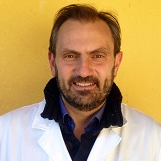The Impact of Oral Microbiota-Immunity Axis in Oral and Systemic Diseases
A special issue of Biomedicines (ISSN 2227-9059). This special issue belongs to the section "Immunology and Immunotherapy".
Deadline for manuscript submissions: closed (15 July 2023) | Viewed by 2604
Special Issue Editor
Interests: microbiota-immunity axis; autoimmunity; cancers; inflammation; T cells; micro and nanoplastic effects on human
Special Issues, Collections and Topics in MDPI journals
Special Issue Information
Dear Colleagues,
The human oral cavity hosts a rich and diversified microbial flora composed by up to 700 different bacterial species which constitute the oral microbiota (OM). After the intestine, the OM represents the second most abundant microbial community in humans, and the coevolution between the oral resident commensal microorganisms and the local immune system allows the establishment of an appropriate level of immunosurveillance to maintain the host health status. However, the disruption of this homeostasis condition could determine an OM dysbiosis, which has already been associated with the onset of oral (e.g., caries, periodontitis, oral cancer) and systemic diseases (e.g., diabetes, rheumatoid arthritis, Alzheimer’s disease, colorectal cancer, cardiovascular diseases, liver diseases).
Although the advent of the next-generation sequencing (NGS) technologies revolutionized the profiling of microbiomes, the OM is still an exciting and expanding field of research.
Hence, the purpose of this Special Issue is to provide an overview of the current updates on the role of OM–immune system interaction in the onset of oral and systemic diseases and novel therapeutic approaches to restore oral eubiosis.
Dr. Amedeo Amedei
Guest Editor
Manuscript Submission Information
Manuscripts should be submitted online at www.mdpi.com by registering and logging in to this website. Once you are registered, click here to go to the submission form. Manuscripts can be submitted until the deadline. All submissions that pass pre-check are peer-reviewed. Accepted papers will be published continuously in the journal (as soon as accepted) and will be listed together on the special issue website. Research articles, review articles as well as short communications are invited. For planned papers, a title and short abstract (about 100 words) can be sent to the Editorial Office for announcement on this website.
Submitted manuscripts should not have been published previously, nor be under consideration for publication elsewhere (except conference proceedings papers). All manuscripts are thoroughly refereed through a single-blind peer-review process. A guide for authors and other relevant information for submission of manuscripts is available on the Instructions for Authors page. Biomedicines is an international peer-reviewed open access monthly journal published by MDPI.
Please visit the Instructions for Authors page before submitting a manuscript. The Article Processing Charge (APC) for publication in this open access journal is 2600 CHF (Swiss Francs). Submitted papers should be well formatted and use good English. Authors may use MDPI's English editing service prior to publication or during author revisions.
Keywords
- immune response
- oral microbiota
- inflammation
- systemic diseases
- NGS technologies






